- Legacy Help Center
- FAQs & Troubleshooting
-
Buyer - How To Guides
- General Information
- Requisitions
- Purchase Orders
- Receiving Notes
- Invoices
- Paperless Invoicing
- Credit Notes
- Buy List
- Self-Managed Pricing
- Contract Catalogues
- Suppliers
- Inventory
- Mobile Stock Taking
- Recipe Manager
- Point Of Sale
- Budgeting Module
- Rebates
- Accounts Payable
- Account Administration
- Approval Workflow
- User Accounts
- Internal Requisitions
- Barcodes
- Informal Supplier Management
- Punchout
- Snapshots
- Informal Products
- Internal Requisition
-
Supplier - How To Guides
-
Information Guides
-
FAQs & Troubleshooting
-
Snapshots
-
Paperless Invoicing
-
General Information
-
Chat
-
Internal help guides
Is it possible to run the 'Period End Balances - Detail' report for previous months? | Purchase Plus Help Documents
Yes, it certainly is. Please follow the below steps:
1. From 'Dashboard', go to [Inventory], [Settings], click on the month that is currently showing, as below this would be 'December 2020' for example (Note - the month shown will vary depending upon your current month).
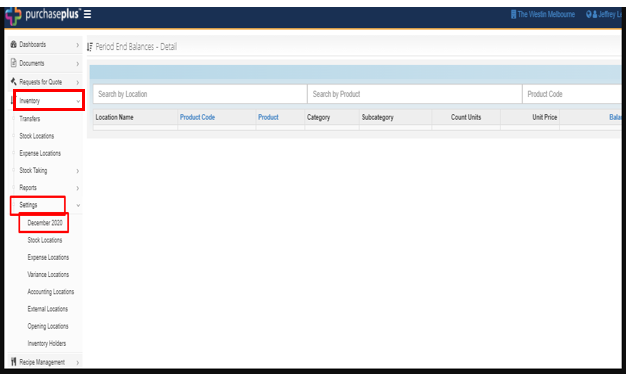
2. From the new pop-up window, select the month that is required. (Note - changing the period end in this screen will change the period in which stock locations are opened and closed, as well as the period in which expense locations are cleared. Ensure to change the period month back to the current month as soon as the report is finished running and exported).
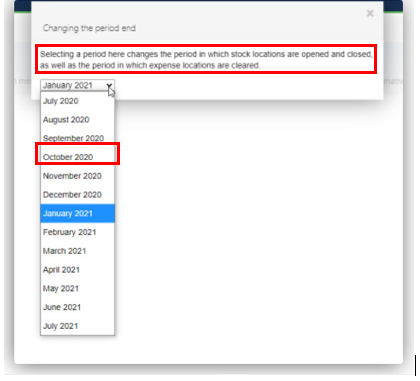
3. A green pop-up, as below, will show in the top right-hand side of the screen to notify the period has been changed.
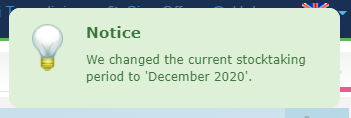
4. To run the 'Period End Balances - Detail' report, from Inventory tab, click on [Reports] [Period End Balances - Detail].
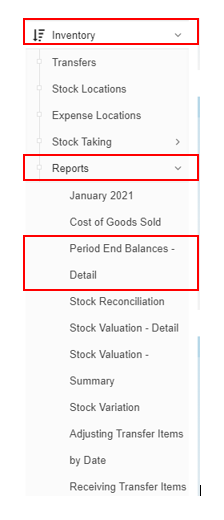
5. A new screen entitled 'Period End Balances - Detail' will appear. From this screen, the report can be exported and saved.
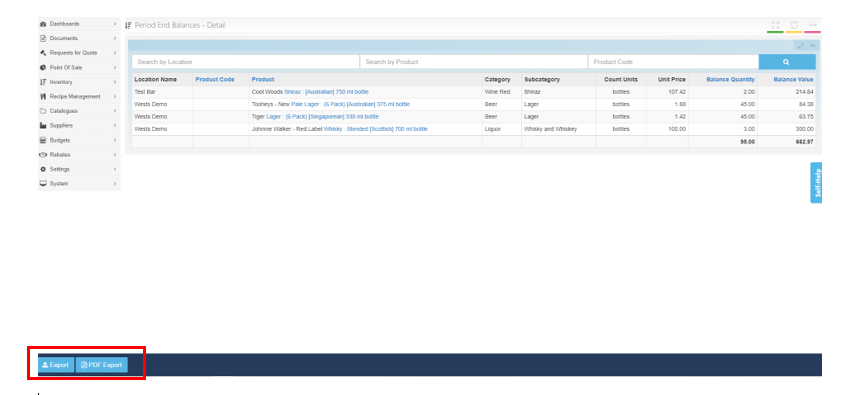
6. Click [Export] to export the filed as a 'csv' file, or click [PDF Export] to export the file as a 'PDF' file.

7. Remember to revert the period month back to the current period once this file has been successfully exported and saved, by following steps 1 & 2.